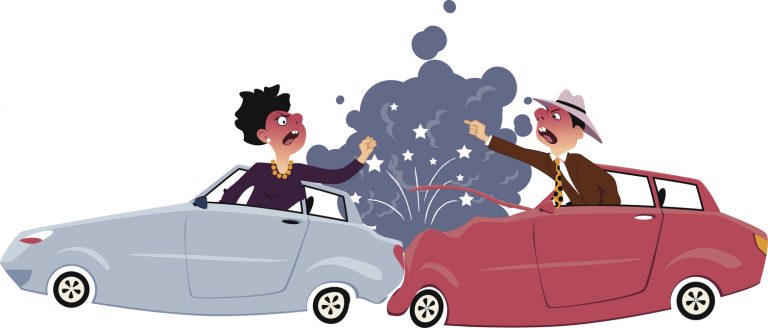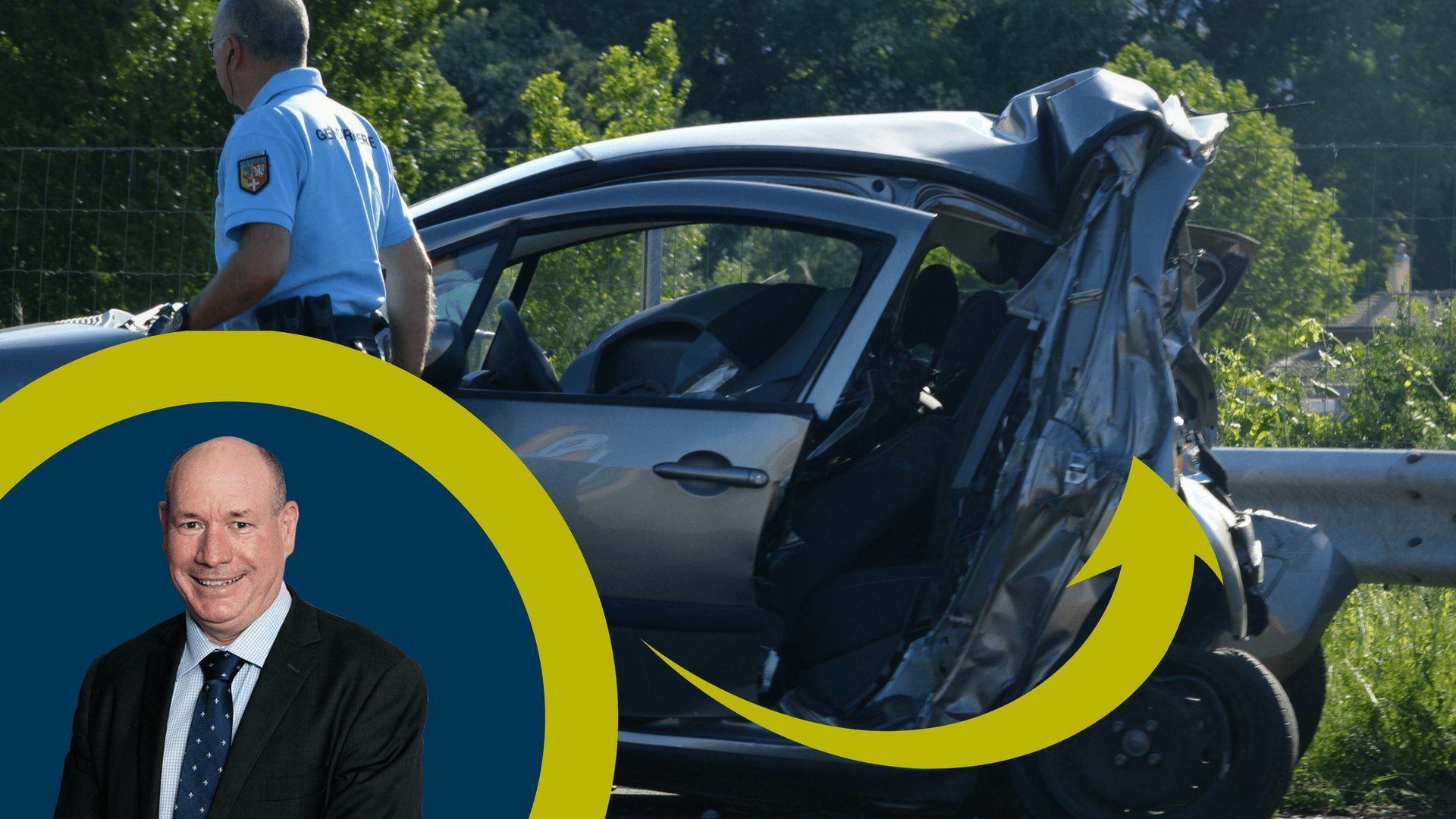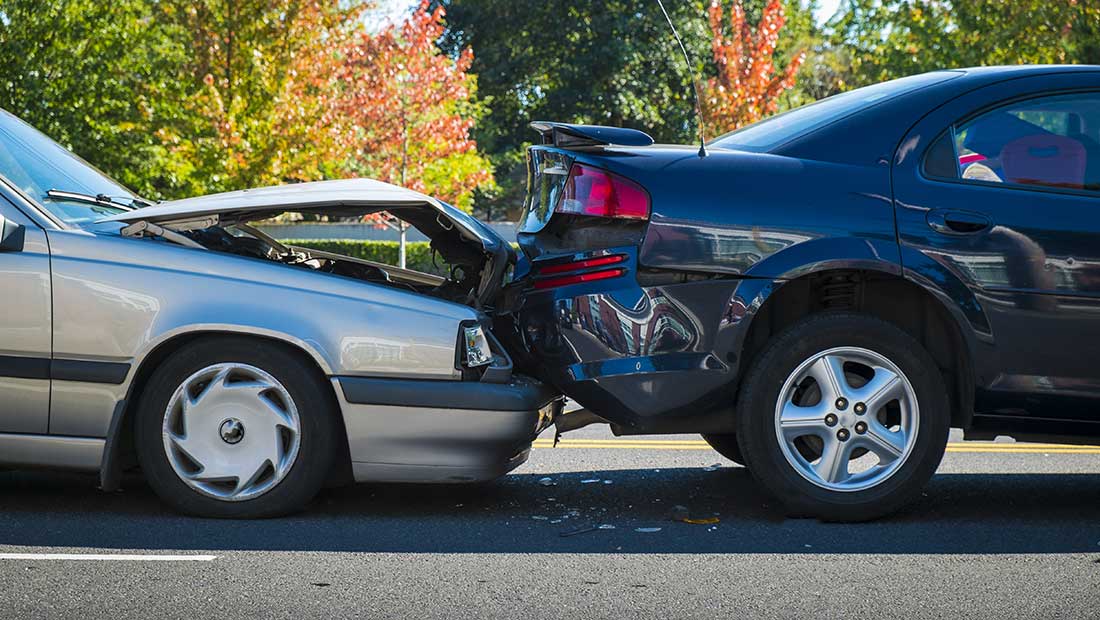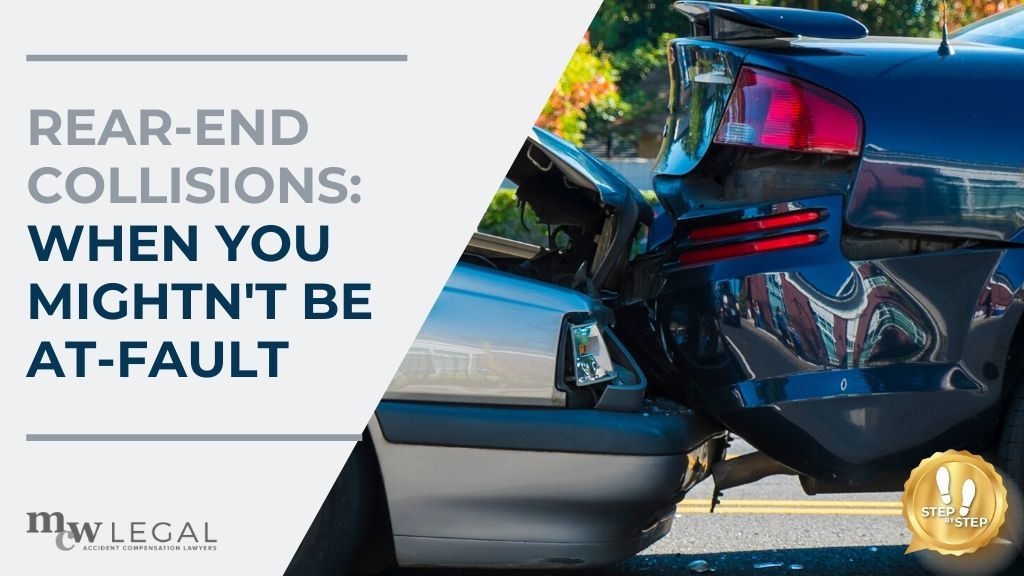rear end collision fault australia
Most of the time rear-end collision damage is caused by a square-on impact to your vehicle but in some cases your vehicle could be hit at an angle. Hard braking the leading driver slams on his or her brakes too quickly 2.

Who Is At Fault In A Rear End Collision Jack Bernstein Injury Attorneys
Crashes often occur when.

. There are some situations where the driver in the back may not be liable for a rear-end collision. This can be tricky because the car in front might have slammed on their brakes suddenly but it can often be argued that with the right amount of space left a driver should have enough time to safely brake without crashing into the vehicle in front. This belief stems from the notion that drivers can see what is ahead and should be concerned with obstacles in front of them therefore a driver should reasonably be able to stop or otherwise avoid striking other cars from behind.
The driver in front accelerated in reverse. Fault in a rear-end automobile accident is not automatic. So whos at fault and why.
It is generally assumed that the rear driver is at fault in a collision but that may not be true in every situation. It is a common type of motor vehicle accident in Western Australia. Fault in most car accidents is determined by negligence.
Lets review some them. Is it pre-determined that the car from behind is always at fault. In fact a shocking 360000 Australian motorists reported being involved in an accident in the year ending July 2018 with rear end crashes being the most common car collision making up one-third of these accidents.
So when youve rear-ended someone and you think they were to blame it can be frustrating. Multiple vehicle pile-ups and accident events and multi-car collisions are among the deadliest form of accident and can complicate whos at fault. This presumed negligence also makes them liable for both damage and injuries.
Rear-end collisions usually occur due to high vehicle speed reckless driving distracted driving or tailing driver not paying attention to road conditions. The lead driver could be at fault for a rear-end crash in this situation. Rear-ended by commercial truck.
Accidents involving semi-trucks commercial vehicles tractor-trailers 18-wheelers big-rigs dump trucks etc involve specialized. The driver of the car that rear-ends a leading vehicle will almost always be at least partially negligent negligence is the legal principle that determines fault for a car accident. There are number of scenarios in which the person who rear ends another is not at fault.
Youd need to talk to a lawyer for an accurate answer to a specific case but in general the guy who runs into someone from behind is liable unless. Does the rear driver always take the blame in a rear-end collision. The reality is the front driver or multiple parties can be held accountable for rear-end collision fault.
Get the basics on proving fault for a car accident Establishing Fault for Rear-End Accidents. A rear end driver may not be to blame or may only be partially to blame in any of the following situations. This is the most common cause of rear-end collisions where the front driver is usually found at fault.
Here are some average settlement amounts. There are multiple vehicles involved and another car pushed their vehicle forward. In any road traffic accident that requires police attendance they are responsible for investigating the accident and determining the person or persons at fault.
In rear-end collisions the driver in the rear usually bears fault but some accidents may also result from the negligence of the driver in the front. A rear-end collision occurs when one vehicle collides directly into the back of the vehicle in front of it. In short the rear driver is almost always at fault and will be found liable for damages.
The person at fault in a rear end collision is an important factor as it will help determine whether or not anyone involved may be entitled to compensation. Injuries requiring further care or surgery. In almost all cases involving rear-end.
While the rear driver is often at fault for following too closely or distracted driving the lead driver can also be at fault. The National Road Safety Strategy has identified intersection crashes as one of the most frequent crash types occurring on Australian roads. Moreover another vehicle pedestrian or even road conditions may have been a contributing cause of a rear-end collision.
Driving under the influence of alcohol or drugs. How to determine whos at fault in a rear-end car crash. Hard acceleration the following driver accelerates too quickly 3.
Rear ended car accident In most cases the driver who ran into the back of the other vehicle is usually found at fault. In a rear-end accident involving two vehicles the driver of the rear car is at fault unless the collision occurred due to the front car rolling back in which case the driver of the front car will be liable. On top of the damage to your car youre likely being chased by the other drivers insurer.
This is because every driver has a duty to follow other vehicles at a safe distance that varies depending on vehicle. If the accident involves three or more vehicles the driver of the last car will be responsible for the damage to all cars involved. As rear-end crashes are a common collision type at intersections they have been targeted as part of the strategy.
Most drivers assume that any accident involving a rear-end collision is always the fault of the driver in the back. Unsafe lane change. A rear-end collision could occur if the lead driver cuts off the rear driver during an unsafe lane change.
Weve all heard the story go if you rear-end someone then its your fault. Merging on top of or right in front of another driver without leaving enough room is dangerous and can cause an accident. You could be injured.
The way in which your vehicle is hit will greatly affect the type and severity of damage that can occur. What is the ruling on rear-end collisions in Australia roads. Here are 8 situations in which the front driver may be at fault in a rear-end collision.
In most rear-end accidents especially where only two cars are involved its the driver of the car that hit the other car from behind whos considered to have caused the accident. You could end up in a back and forth tug of war of his fault her fault. If not when is the car from behind not at fault.
Failure to yield the right of way In a failure to yield the right of way a driver carelessly pulls out in front of you when you have the right of way. Click here to learn more about determining fault in a rear-end accident case. A rear-end collision usually involves the driver of one car crashing into the back of another car.
Being demonized for something that. If a car suddenly moves in front of you that is moving significantly slower than you are that brakes suddenly or that. The settlement will be received in a lump sum or in a series of smaller payments.
Factors found to be related to an increased incidence or severity of rear-end crashes include. The Other Driver Cuts You Off. The court will determine which driver was at rear-end collision fault and award a settlement to the victim.

When Is A Rear End Collision Not Your Fault This Is What To Know Side Car

Are Rear End Accidents Always The Fault Of The Driver Of The Car Following No Win No Fee Personal Injury Lawyers

Car Accident It Wasn T My Fault So Why Am I Liable

Rear End Collision Why You Might Not Be At Fault Mcw Legal

Have Your Been Involved In A Rear Ended Car Accident Expert Advice

Car Part Different Types Of Rear End Collision Damage

Rear End Collision Why You Might Not Be At Fault Mcw Legal

Are You At Fault If Someone In Front Of You Brakes Suddenly Gino S Panel And Paint

Are You At Fault If Someone In Front Of You Brakes Suddenly Gino S Panel And Paint